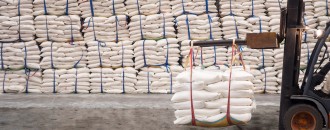
'FDI limit in media and entertainment should increase'
Interview by Sisir Pradhan | The Dollar Business  The Dollar Business (TDB): Why should media and entertainment be a part of Make in India, which looks at the larger economy from manufacturing point of view and developing infrastructure? Are you surprised that Prime Minister Narendra Modi has also earmarked media and entertainment as one of 25 sectors under the Make in India initiative? Jagi Mangat Panda (JMP): Not at all! Because I don’t think it should be only manufacturing, I believe that any large industry which is capable of generating millions of jobs should be a part of Make in India campaign. I was happy to see and pleasantly surprised to see media and entertainment sector has been included in the Make in India campaign.
The Dollar Business (TDB): Why should media and entertainment be a part of Make in India, which looks at the larger economy from manufacturing point of view and developing infrastructure? Are you surprised that Prime Minister Narendra Modi has also earmarked media and entertainment as one of 25 sectors under the Make in India initiative? Jagi Mangat Panda (JMP): Not at all! Because I don’t think it should be only manufacturing, I believe that any large industry which is capable of generating millions of jobs should be a part of Make in India campaign. I was happy to see and pleasantly surprised to see media and entertainment sector has been included in the Make in India campaign.
 Jagi Mangat Panda, Managing Director, Ortel Communications Ltd
Jagi Mangat Panda, Managing Director, Ortel Communications LtdTDB: Has Make in India given anything in particular to the sector or anything concrete that has been offered to the sector after the announcement of the scheme. JMP: I haven’t tracked whether investment that has come to the sector ever since the campaign was announced but I know there are other sectors that has attracted investment but as far as is concerned I am not sure. But going forward there is huge opportunity for us to attract investment into this sector considering the sector is really growing. TDB: One step of the Modi government that got a lot of praise from the investment community is opening up of defence sector for FDI, from 26% to 49%. Given that it might be a surprise to many outside India that media is one of the most regulated sectors in the country and FDI limit in the sector is just 26%. Now under such circumstance why a foreign media house would invest in India in a big way and create job opportunities if they are not allowed to hold management controlling stake in a venture. JMP: I don’t think the objective for including media and entertainment, particularly media in Make in India is to attract strategic investment. When they (investors) come in, they don’t really see whether it is 26% or they don’t really want a majority stake or management control. If we are looking at only serious investors, I think that is the whole objective. Because we have the expertise available locally. We have people who understand the industry, so we don’t want an outsider. TDB: If the government is increasing FDI limit in a sensitive sector like defence, what is so sacrosanct about media? JMP: Yes! That is the question that we can ask the government. But I would like to see if they raise the FDI bar for the sector because there are many more investors. But if we see this as a beginning then it is a welcome move (to make media and entertainment a part of the Make in India campaign) by the government. TDB: It might again be a surprise to many that the government in fact allows 100% equity if it is a magazine but not if it is a newspaper or a TV news channel. Does that mean that a country which has freedom of speech as a fundamental right the policy makers (it is about the entire political class not necessarily with the Modi government) actually want to curb that. Particularly, in the age of Internet even it is a futile attempt by the government to have a kind of control over public opinion in the country. JMP: I am not very excited to comment on this. But this is the way things have been for decades now. It is not that things have been different and they changed suddenly. I believe being a conservative lot in the country we like to do things very gradually. We just don’t want go and open up the sector. If that is why the government is doing this then it is great but then if there is some other objective behind it, whether it is their insecurity or any other issue, then it is not a very good sign for the country. But like many, I am in favour of increasing the FDI limit in the sector. TDB: Coming back to business part, the media sector hasn’t been doing great. Some of the biggest news networks have been burning cash for almost a decade. It is a big surprise to realise that Ortel Communication’s market cap is much higher than NDTV’s market cap given the fact that NDTV has been in the business for much longer duration than Ortel. So what is the real issue with the Indian media and why so many media houses are losing money? JMP: When we talk about media, one tends to look only at the large media houses because they have been there in the business for much longer time. But look at the hundreds of channels that have come up in the last couple of years, especially in the regional media space that are doing pretty well, for example, the media industry in Andhra and Telangana region. So if you look at the whole sector, what the national channels may have lost, the regional channels have gained much more than that. There has been some sort of balance and growth which has been there. TDB: Do you believe the challenge that a pan India news channel faces is different from that of a regional channel and that is the reason why regional players are doing better than pan India operators? JMP: It is not just with regional players but there are pan India media operators who are also doing good too. Let’s not just look at the failures; in fact I am sure there are some pan India media houses which are doing well. But if you look at the regional space that has grown in the last few years, it has grown exponentially. Hundreds of regional channels that have come up in recent years and they have good viewers base and probably that is why the pie for regional players is growing and the national players is coming down. TDB: Do you think at present the competition is just too high in the Indian media space given the fact that there are around 800 media channels in the country and the advertising pie is not large enough to cater to may be a majority of them? JMP: I don’t agree. We are a country of about 1.3 billion people and it is quiet diverse in terms of culture and language. So for a country like us you have to see it from the point of view of a continent rather than just a country. So if you compare it with other continents then we are all right may be the number (of channels) is many more than what others have but it is not that big an issue. There is competition in every sector, for example look at the telecom space. In the last few years, in the regional media space one concern is a lot of fly-by-night operators that have come in, who invest because they think having a news channel will get them clout and that is not a good reason to have a news channel. Because news channels are all about credibility and giving information to people. So that is more of a negative from my prospective. TDB: For you what is one big challenge for media sector in the country for the next five years that might act as a big road block for the growth of the sector? JMP: For regional media one big challenge is getting good and high-end content that suits the taste of viewers. We need the talent and the kind of money to create quality content. Advertisement spending in regional markets like Odisha is still very small. I think the challenge today is that how do we make good content, for which we need lots of money, and bring it to people. So advertisement revenue is one of the concerns. Growth of advertisement market is crucial for the media sector who operate in the regional space.
October 06, 2015 | 4:06pm IST.






 to success.
to success.